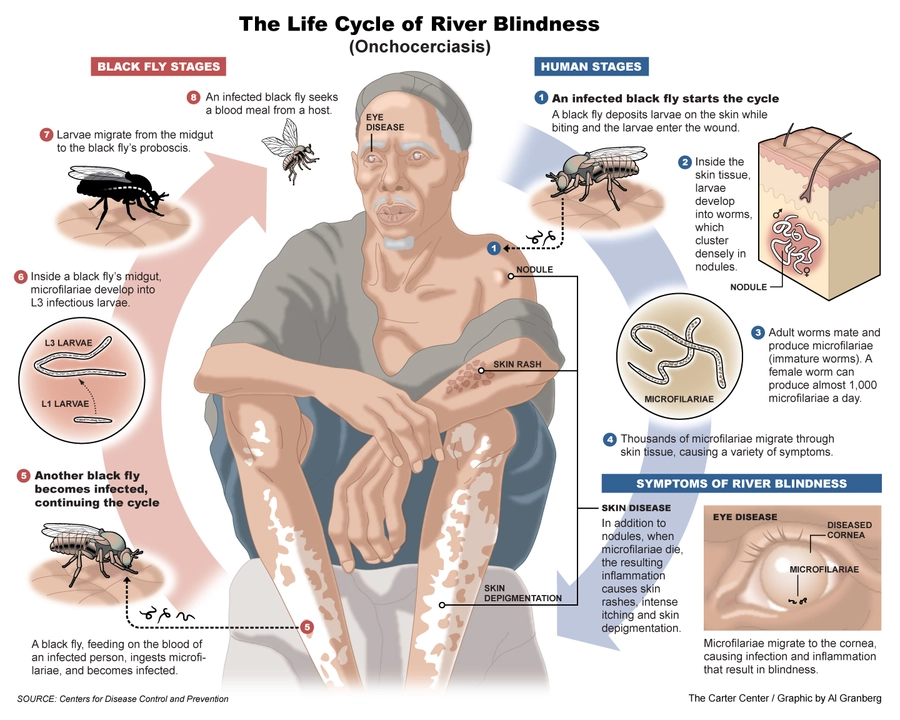River Blindness: What You Need to Know and How to Stay Protected
River blindness isn’t just a strange name—it’s a serious disease that affects millions in certain parts of the world. Officially called onchocerciasis, it spreads when blackflies carry a tiny worm and bite people, mostly near fast-moving rivers. This worm—Onchocerca volvulus—has one big target in your body: your eyes, and your skin. Without treatment, it can lead to permanent vision loss, intense itching, and skin bumps.
Most of the time, river blindness turns up in rural Africa and some parts of Central and South America. In these places, the blackfly populations thrive, and so do the risks. So, what should you actually be looking for? It starts off sneaky. You might notice itchy skin, a bit like an allergic rash. Then, nodules—small lumps—can show up under the skin. Itching gets worse with time, and skin might start to change color or get loose and wrinkled. Vision trouble doesn’t hit suddenly; it builds up, starting with minor eye irritation and possibly ending in blindness if things are left untreated.
Here’s a wild fact: you can’t get river blindness by touching, hugging, or drinking water from rivers. It’s all about the bite of a single infected blackfly, but those bites can add up quickly when the flies are swarming. That’s why prevention matters so much, especially for people living or traveling in high-risk zones.
Your first line of defense is simple—stop the bites. Long sleeves, pants, and insect repellent are your best friends. Screen your sleeping areas and avoid going near rivers at dawn and dusk, when blackflies love to feed. Local healthcare campaigns often distribute a medicine called ivermectin once or twice a year in hard-hit communities. Taking this stops the worms from growing and helps prevent the severe symptoms, including blindness. The best part? Ivermectin is usually given out for free in affected areas, thanks to large public health programs.
If you think you might’ve been exposed—like after a trip to a remote river area—see a doctor. Diagnosing river blindness isn’t guesswork; doctors might look at your skin under a microscope or do special blood tests to spot the worms even before symptoms get intense.
What’s life like for someone living with this disease? For many, it’s a constant cycle of discomfort, trouble working, and challenges with simple day-to-day living. That’s why public health efforts put so much into stopping the spread, providing medications, and attacking blackfly breeding sites with safe chemicals.
When it comes to answers, don’t fall for myths—river blindness is preventable, treatable, and doesn’t turn up everywhere. If you want honest, real-world info about risks, symptoms, and practical tips, you’re already in the right place. Staying informed can truly make all the difference.
Albendazole's role in treating onchocerciasis
As a copywriter, I recently came across the topic of Albendazole's role in treating onchocerciasis, which I found fascinating. Onchocerciasis, also known as river blindness, is a parasitic disease caused by the worm Onchocerca volvulus. It affects millions of people, mainly in Africa, and can lead to severe itching, skin lesions, and even blindness. Albendazole is an antiparasitic medication that has shown great promise in the treatment of onchocerciasis. When used in combination with other drugs like ivermectin, Albendazole has been found to be highly effective in killing the adult worms and preventing the spread of the disease. This treatment strategy, known as Mass Drug Administration (MDA), has had a significant impact on reducing the prevalence and intensity of onchocerciasis in affected areas. It's truly remarkable how this medication has helped millions of people regain their health and prevent further complications from this debilitating disease. In conclusion, Albendazole plays a crucial role in the fight against onchocerciasis. By working alongside other medications, it has proven to be a powerful weapon in treating this disease and improving the quality of life for those affected. It is my hope that with continued research and development, we can one day eliminate onchocerciasis for good.
